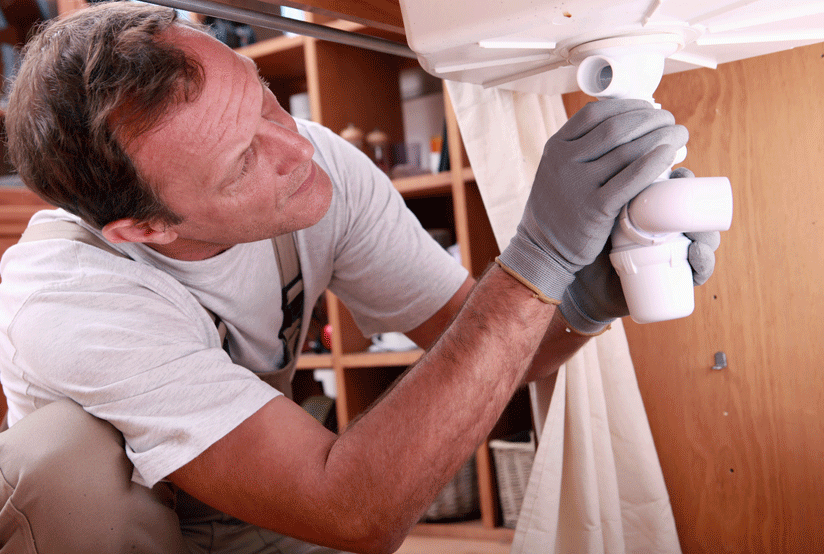We've unearthed this article involving Three Common Ways to Fix a Slow Drain below on the net and concluded it made sense to write about it with you on my blog.

Intro
We've all been there: You're cleaning your teeth or washing your hands, and you see the water pooling in the sink. Rather than swiftly swirling away, it remains, turning your once-refreshing early morning routine right into a mini swamp scene. A slow-draining sink isn't just irritating; it's frequently an indicator of bigger pipes issues lurking below the surface. The bright side is that many slow-draining sinks can be repaired with a little knowledge, a couple of fundamental devices, and some persistence. All set to tackle this job head-on? Allow's roll up our sleeves and dive right in.
Recognizing the Causes of a Slow-Draining Sink
Prior to you begin poking around in your pipelines, it helps to understand what may be creating the stagnation. Recognizing the source makes it simpler to pick the ideal fix.
Devices and Products You'll Need
The right devices make all the distinction. Luckily, you will not require a totally equipped plumbing professional's van to get the job done.
Step-by-Step Overview to Dealing With a Slow-Draining Sink
Now, let's enter into the nitty-gritty. This step-by-step procedure will lead you with easy strategies to recover your sink's drainage.
Action 1: Eliminate and Clean the Stopper
Frequently, the stopper (that tiny plug you push down to obstruct water) is the very first offender. Remove it meticulously and clean off any kind of hair or substance caught around its base. Rinse it extensively prior to putting it back in place.
Action 2: Make Use Of a Bettor to Dislodge Particles
Got that plunger prepared? Position it over the drainpipe and offer it a couple of firm pumps. The concept is to develop suction that can loosen any obstruction. If you see bits of debris drifting up, you're on the appropriate track.
Action 3: Try a Drainpipe Serpent or Wire Wall Mount
If the bettor does not suffice, it's time to draw out the drain serpent. Delicately feed it into the drain and spin as you go. You might really feel some resistance-- that's likely the blockage. Maintain twisting and pulling until you get rid of the blockage. If you don't have a drain snake, a corrected cord hanger can operate in a pinch.
Step 4: Apply a DIY Drainpipe Cleanser
A natural cleaner made from baking soda and vinegar can break down recurring gunk. Pour half a mug of cooking soft drink right into the drainpipe, complied with by half a mug of vinegar. Let it fizz for about 15 minutes, then flush with warm water. This chemical reaction typically does wonders for small clogs.
Step 5: Rebuild and Examine the Sink
Put every little thing back together and run the faucet. Does the water now swirl away at a decent speed? If yes, offer on your own a pat on the back. Otherwise, do not anguish-- there are still a few even more dress up your sleeve.
Important Devices for Do It Yourself Fixes
A bettor is your go-to starting point. A tiny, sink-sized bettor develops suction that can remove small clogs. For more consistent obstructions, a drainpipe serpent (occasionally called a plumbing technician's auger) functions wonders. A set of gloves, a flashlight, and possibly a set of safety goggles are also convenient.
Advised Cleansing Solutions
Mild meal soap and warm water can assist break down oily build-up. A mix of cooking soda and vinegar is a reliable home remedy, and chemical cleansers use an even more environment-friendly approach. Keep chemical drain cleansers as a last hope, as they can be harsh on your pipelines.
Common Offenders Behind Slow Drainage
So, what's obstructing things up? Commonly, it's a blend of everyday debris-- believe hair, soap scum, toothpaste residue, and remaining food fragments. Over time, these little bits build up and cling to the pipe wall surfaces, gradually tightening the flow and making it harder for water to travel through. In some cases, natural resource from tough water can additionally add to the crud, developing the excellent tornado for persistent clogs.
When is it Time to Act?
If you observe the water draining slower than common, it's a good concept to interfere earlier instead of later. Waiting too long could lead to complete blockages, undesirable odors, or perhaps pipe damage. If the water takes greater than a few secs to clear out after switching off the faucet, consider it a red flag and get ready to place on your DIY hat.
Safety And Security First: Safety Measures and Prep work
Before you launch into unclogging mode, think about safety and security. You're dealing with potentially dirty water and debris, so slip on a pair of handwear covers. If you're utilizing chemical cleaners, make certain the area is well-ventilated and adhere to the guidelines on the label.
Protective Gear and Workspace Configuration
Set some old towels or rags around the sink area to capture splashes. Clear away any kind of things that might enter your means, like soap dispensers or toothbrush owners. Make certain you have excellent lights-- order a flashlight if needed.
Different Approaches for Stubborn Clogs
Not all blockages are produced equivalent. If your sink still rejects to coordinate, take into consideration these alternate services.
Sodium Bicarbonate and Vinegar Method
We currently discussed this, but it's worth noting once more. This mild, environmentally friendly technique is much safer than chemical cleaners and usually quite effective.
Enzymatic Drainpipe Cleansers
Enzyme-based cleaners use natural microorganisms to digest raw material. They're an excellent option if you're looking to avoid rough chemicals. Simply bear in mind, they may take a bit longer to work their magic.
Chemical Drainpipe Cleansers: Advantages And Disadvantages
Chemical cleansers can blast via tough obstructions fast, however they're not without disadvantages. They can produce warmth and fumes, damage pipelines if utilized excessively, and pose environmental dangers. Utilize them sparingly, and constantly comply with the instructions meticulously.
Safety Nets to Maintain Your Sink Flowing
Prevention is the very best treatment. By taking on a couple of basic routines, you can maintain your sink from reducing in the first place.
Normal Cleaning Up Routines
Wipe down the sink container and fixture area consistently. Remove hair or food particles prior to they have a chance to wash down the drainpipe.
Staying Clear Of Hazardous Materials Away
Think twice before unloading coffee grounds, grease, or fibrous veggie scraps down the sink. These perpetrators cling to pipeline walls, developing obstructions in time.
Regular Maintenance Checks
Schedule a fast monthly examination. Run hot water with the sink for a couple of minutes, taking notice of the flow. If it seems slow-moving, act fast prior to it comes to be a full-on obstruction.
When to Call a Professional Plumbing
In some cases, regardless of exactly how difficult you try, that clog simply won't move. That's when it's time to generate the pros.
Indicators That Suggest a Much More Major Issue
If your sink drains pipes gradually in spite of multiple efforts, or if you discover water backing up in various other fixtures (like your shower or bathroom), you may have an extra major plumbing concern hiding deeper in the system.
Stabilizing DIY Initiatives with Specialist Help
While DIY can save you cash and use a feeling of accomplishment, there's no shame in calling a professional. A professional plumber can examine your entire plumbing setup, making certain there's no underlying damages or long-lasting problem that could cost you much more down the road.
Comparing Expenses and Long-Term Solutions
Before deciding, think about the big picture. A low-cost, quick fix might address the trouble momentarily, however investing in an extra permanent service might conserve you cash and tension over time.
Weighing the Expenditures of Do It Yourself vs. Expert Solutions
DIY repairs commonly set you back bit greater than the rate of a plunger or a bottle of baking soft drink. Professional solutions, on the other hand, come with a cost yet might avoid repetitive concerns and expensive fixings later.
Investing in Quality Fixtures and Upgrades
If your sink's layout adds to frequent obstructions, it could be worth updating to higher-quality fixtures or changing the pipes format. Consider this an investment in your home's capability and convenience.
Verdict
A slow-draining sink can feel like a small irritability, yet it's usually an indication that your pipes needs a little TLC. By comprehending the origin, employing the right tools and methods, and committing to easy safety nets, you can keep your sink flowing openly. And when all else stops working, never ever hesitate to call in a professional-- your home's pipes is worth the financial investment in treatment and upkeep.
How to Fix a Slow Sink Drain: 7 Methods
Clean the Stopper
Remove and clean the stopper. A pop-up drain stopper and the sloped shape of the sink are designed for optimal debris and build-up collection. If you do not have a drain zip tool, or the tool cannot clear out all debris, another option is to remove and clean the pop-up.
Most pop-ups are held in place with a nut attached to the drain just under the sink. To remove the pop-up, reach behind the drain pipe under the sink to find the pop-up nut. Once the nut is removed, the pop-up can be removed from the sink drain, cleaned, and reinstalled.
Use Homemade Drain Cleaner
Employ a DIY solution. A homemade drain cleaner can clean the drain pipes after the larger debris has been pulled out. The chemical reaction caused by combining two common and inexpensive household products, like vinegar and baking soda, can help break down the mucky build-up on the inside of the drain pipes and get the drain flowing freely again.
Pour 1/2 cup of baking soda down a slow-draining sink. Follow it with 1/2 cup of vinegar. Let the mixture rest for a few minutes. Rinse the solution with boiling water to clear the clog. Clear the Sink Overflow
Clean the overflow. The sink overflow is another place where debris and build-up can be collected over time. If a sink drains slowly and cleaning the drain doesn't work, try to clean the overflow.
The overflow opening is intended to divert water into the drain if it accidentally rises too high in the sink. It also allows air into the drain when the sink is filled with water, helping it drain faster.
Use a Plunger
Give it a good plunging. A plunger can be used on a slow sink drain; it does not have to be reserved for a complete drain stoppage. Plunging can help loosen and dislodge hair and debris in the pipe. To ensure the plunging motion is effective, cover the sink overflow with a rag or some duct tape to make a seal before plunging.
Use a Snake
Try a snake. If straightforward methods aren't working, consider getting a drain auger or snake to clear a bathroom or kitchen sink drain. A drain snake is a thin, flexible metal cable that can be wound or unwound on a reel. It has a drill or corkscrew-like end that can penetrate clogs, dislodge them, and pull them out.
Clean the P-Trap
Unclog the P-trap. If all other methods fail to clear a stubborn clog, the last step before calling a professional is removing and cleaning the P-trap or the drain pipe under the sink with a bend shaped like a "P" rotated 90 degrees, clockwise to the right. That U-shaped bend in the pipe is a top spot for gunk, like hair, food, grease, and debris, to build up and get clogged.
Once you remove the drain pipe, you need a bucket to catch residue, water, and debris. You might need Channellock pliers or a wrench if you can't unscrew the slip nuts by hand.
Tips to Prevent Slow-Draining Sinks
Sinks are only for water, soap, or toothpaste: Use toothpaste correctly and fully lather it in the mouth; do not let globs of toothpaste go undissolved down the drain. Stop hair and debris from going down the drain: Refrain from brushing your hair over the sink, or get a fine mesh drain hair catch for the drain hole. If shaving your face over the sink, wipe away the stubble with a washcloth, and rinse the washcloth and razor in a wash basin. Empty the water into the toilet or tub drain. Clean the sink stopper regularly: Remove the stopper and clean out any hair and dirt that may have lodged in the drain. Flush the sink with hot water regularly: Hot water will help move or loosen hardened or sludgy toothpaste, grease, mineral deposits, and hair. Some experts suggest using boiling water; however, beware since boiling water might melt PVC or crack porcelain.

Hopefully you enjoyed reading our post on Three Common Ways to Fix a Slow Drain. Thanks a lot for taking the time to read through our short article. Sharing is good. Helping others is fun. Thank you for your time. Return soon.
Call Today
 Mr. T Then & Now!
Mr. T Then & Now! Jason J. Richter Then & Now!
Jason J. Richter Then & Now! Michael Bower Then & Now!
Michael Bower Then & Now! Michael Jordan Then & Now!
Michael Jordan Then & Now! Megyn Kelly Then & Now!
Megyn Kelly Then & Now!